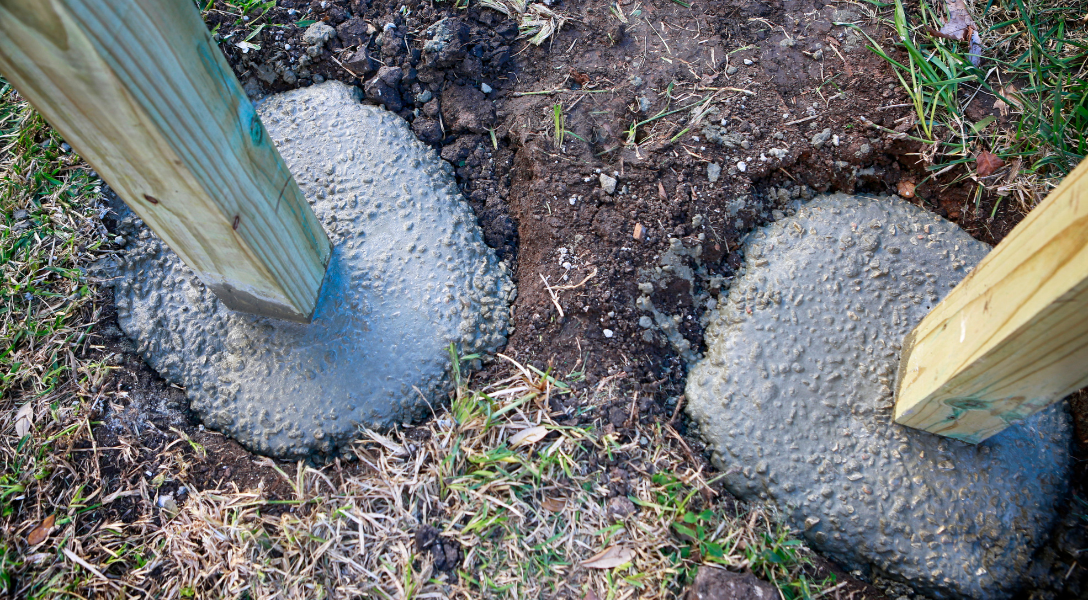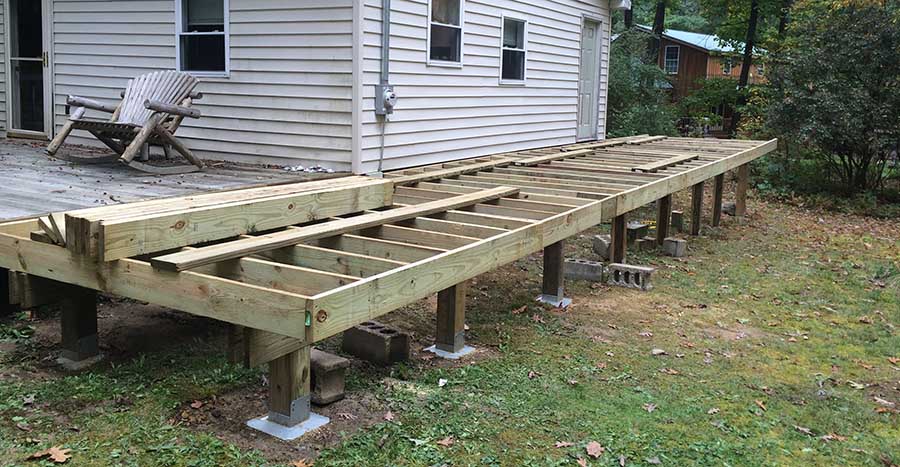Engineered for Success: The Scientific Research Behind Durable and Resilient Deck Footings
Wiki Article
Professional Tips for Installing Deck Footings to Support Your Outdoor Area
When it concerns developing a deck, one of the most critical components to consider is the installation of proper grounds. These grounds are the foundation whereupon your outside room will certainly relax, giving security and assistance for years to come. However just what does it require to install deck grounds appropriately? In this conversation, we will certainly explore experienced pointers and methods that can help ensure a successful and resilient deck installation. From choosing the appropriate kind of footings to staying clear of usual mistakes, we will provide you with the expertise and insights you need to confidently start your deck-building journey. Let's dive right in and find the secret to a long-lasting and strong exterior space.Relevance of Proper Deck Footings
Appropriate deck grounds are necessary for making sure the stability and durability of your outside room. When constructing a deck, it is crucial to pay interest to the foundation on which it will certainly relax. Deck footings give the essential support for the whole structure and help disperse the weight evenly - Deck Footings. Without solid and effectively set up grounds, your deck might end up being unpredictable, resulting in security threats and costly fixings.
Along with security, proper deck footings likewise add to the durability of your outdoor area (Deck Footings). Footings that are developed and created to hold up against the components and soil conditions in your location will certainly help prevent the deck from shifting or settling gradually. By making certain the grounds are effectively sized and installed, you can reduce the danger of damages to the deck structure, expanding its lifespan and minimizing the demand for expensive repair services or substitutes

Choosing the Right Kind Of Grounds
When picking the ideal sort of footings for your deck, it is necessary to consider variables such as dirt problems, regional building regulations, and the total design of your outdoor space. The kind of footing you pick will play an important function in ensuring the security and durability of your deck.One usual type of ground is the concrete ground. Concrete grounds are suitable for most dirt problems and give exceptional support for decks. They are generally mounted below the frost line to stop changing and settling because of freezing and thawing cycles. An additional option is helical piers, which are perfect for areas with unstable soil or high water tables. These piers are screwed into the ground and offer solid assistance for the deck.
In some instances, you might require to use specialized footings, such as pile footings or deep structures, if you are building a huge or multi-level deck. These footings are developed to disperse the weight of the deck over a larger area, guaranteeing stability and protecting against resolving or sinking.
Before selecting a sort of footing, it is important to get in touch with regional building regulations and laws to make certain compliance. Furthermore, think about the layout and intended use your outside space. Aspects such as the dimension, shape, and load-bearing demands of your deck will certainly affect the type of footing that is most suitable.
Preparing the Ground for Footing Installation
To appropriately prepare the ground for footing installation, it is very important to analyze the dirt problems and take necessary that site steps to guarantee security and resilience of the deck. The very first step is to dig deep into the location where the grounds will be mounted. The deepness of the excavation will certainly depend upon the frost line in your area and the particular requirements of the deck layout. It is essential to remove any type of plant life, rocks, or debris from the excavation to guarantee a strong structure.When the location has actually been excavated, the next step is to small the dirt. This can be done utilizing a plate compactor or by making use of a hand tamper. Condensing the soil assists to remove any type of gaps or air pockets, which can bring about settling and instability in time.
After condensing the soil, it is very important to lay a layer of crushed rock or crushed stone at the end of the excavation. This will give drainage and aid to stop water from merging around the footings, which can result in disintegration and instability.
Step-by-Step Overview to Putting Up Deck Footings
After correctly preparing the ground for footing setup, the next action is to start the procedure of installing deck footings. This step-by-step guide will provide you with a clear understanding of how to mount deck footings for your exterior area.Determine the location: Begin by marking the positions of the deck footings using risks and string. Guarantee that the areas line up with the layout and layout of your deck.
Dig the holes: Use a post hole miner or an auger to dig the openings for the grounds. The depth and diameter of the holes must remain in accordance with local building codes and the specific demands of your deck layout.
Level the openings: Use a level to make sure that the openings are dug to the correct deepness and are level with each various other. (Deck Footings)
Include gravel: Area a layer of crushed rock at the base of each hole to improve drainage and avoid the wood from deteriorating.
Insert the footings: Put the grounds into the openings, ensuring they are degree and plumb. Make use of a level and a determining tape to make sure precision.
Secure the grounds: Pour concrete into the openings around the grounds, loading them to the top. Use an article degree to make sure the grounds remain level as the concrete collections.
Allow time for Visit Website treating: Allow the concrete treatment according to the producer's guidelines prior to proceeding with the deck building.
Typical Mistakes to Avoid Throughout Footing Installation
One essential facet to consider throughout the installation of deck footings is preventing common errors that can endanger the security and long life of your outside room. While deck grounds may look like a simple and uncomplicated component of the building and construction procedure, forgeting specific variables can result in pricey fixings and possible safety and security dangers down the line.
In addition, neglecting to install proper water drainage measures can cause water to build up around the footings, leading to rot, degeneration, and the ultimate weakening of the deck's foundation. Using the wrong type of footing product or stopping working to properly secure the grounds can jeopardize their structural integrity.
To stay clear of these mistakes, it is important to talk to a specialist or adhere to market guidelines to ensure proper footing installment. why not look here By doing so, you can make sure the stability and longevity of your outside area, giving a risk-free and satisfying atmosphere for several years ahead.
Final Thought
In conclusion, mounting proper deck grounds is essential for the security and long life of your exterior room. By choosing the right sort of grounds and appropriately preparing the ground, you can ensure a solid structure for your deck. Complying with a step-by-step overview and preventing common errors throughout footing installation will better boost the resilience and safety of your deck.Proper deck grounds are essential for guaranteeing the stability and durability of your exterior space. The grounds offer as a link between the deck and the ground, permitting the weight of the deck and its residents to be dispersed evenly right into the dirt.One typical kind of footing is the concrete footing. Put the grounds: Put the footings into the openings, making certain they are level and plumb. Protect the grounds: Put concrete right into the openings around the grounds, loading them to the top.
Report this wiki page